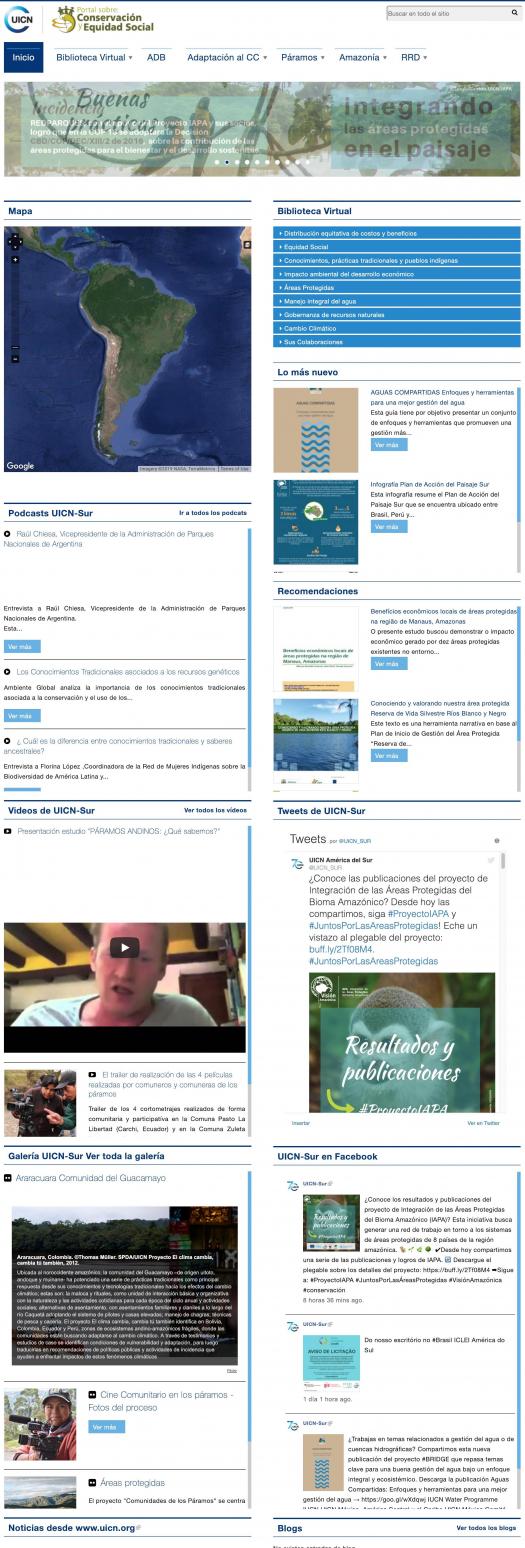Portal CES

About IUCN South América
IUCN is the world’s oldest and largest global environmental organisation. In South America the Regional Office (IUCN-Sur) was established in 1991 in Quito, Ecuador. Together with more than 100 member organizations and nearly 1,000 volunteer scientists on its Commissions, IUCN-Sur has been working for more than 20 years on the implementation of projects for the sustainable management and conservation of biodiversity and natural resources in the region.
IUCN-Sur is recognized as a leader in the strengthening of regional networks, the generation and dissemination of information, and the promotion of conservation strategies and policies. In addition, it has played an important role in assisting national governments and civil society organizations with the development of public policies, supporting and advising decision-making processes, and promoting the implementation of actions for sustainable development.
They promote improved environmental governance processes based on the belief that the management and conservation of biodiversity and natural resources are determined by choices made by society. IUCN-Sur understands that reforms of governance systems can only take place with the support of informed society, effective stakeholder involvement, and the negotiation of interests. The Union is regionally recognized as a convening organization due to its capacity to facilitate multi stakeholder dialogue by bringing together academics, field practitioners, and governmental, non-governmental and multilateral organizations, including the private sector.
About the Portal
The Portal is independent from the main IUCN site located at https://www.iucn.org but it references some of the content from UICN South América located at it. The Portal attempts to promote equity in the management of natural resources. The strategies to achieve this goal are:
- Systematize and socialize research results, initiatives or processes conducted by the academy, governments and non-governmental organizations.
- Promote a joint learning process on issues related to conservation and social equity
Among the main services offered by the portal are:
- Virtual library: contains about 800 technical files of publications related to various socio - environmental issues.
- Information about different active and finished projects, organized in a hierarchical way to promote ease of access.
- It also provides complementary information related to events, financing opportunities, training, scholarships, etc.
Architecture and Technological Challenges
The project was developed in Drupal 7 and development started in 2017. A custom design was prepared given a previous UX analysis thinking on the best way to organize the content so it easily accesible by the audience of the portal, prioritizing certain feature to appear at the top and organizing the information in blocks. To promote familiarity and a standard structure of the portal, the layout of the different sections and pages is fixed so the content will display the same way and content editor just need to take care of uploading the necessary content (news and articles and media content).
Maintenance and Roadmap
Minimal maintenance is continuously being performed on the portal and there are know issues that are being fixed depending on the priority of those. Some of the know issues (mostly visual) are side effects of periodic module updates being performed to maintain the portal secure which takes priority over appearance. Pro-active preparation is being performed in order to prepare the content structure for a future Drupal 8 migration. As for the main issues to be corrected are:
- Update the importing of external news from IUCN South América. When the main IUCN website was upgraded to Drupal 8, the feed import got misconfigured due to changes in the structure. This cause for images to be imported incorrectly.
- A fixed layout helped us to maintain the design and structure and promote familiarity. However, it limits the flexibility for content editors to add certain content that do not necessarily fall into the standard content types created, or for different purposes, some content blocks need to be prioritized over others. This is being taken into account for future D8 migration, so that content editors have a bit more flexibility over the content positioning in the layout without impacting the layout itself and the responsiveness.
